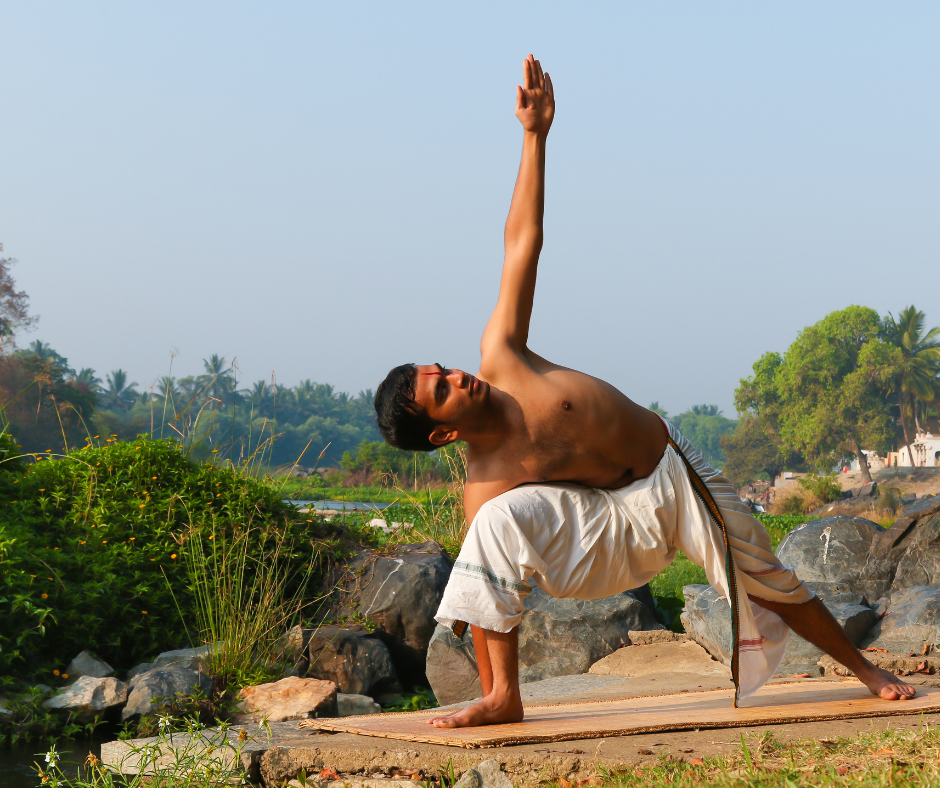Concepts of Tantric Hatha Yoga
An excerpt of blog posts to highlight some key concepts behind our tradition.

Tapas: Fire in your Practice
Swami Kripalu was a strong practitioner of life-transcending tapas. He ate one meal a day, lived in seclusion, meditated for 10 hours a day – he spent his life going against the grain. Like him, many yogis throughout history have practiced tapas in a way that looks crazy to us – starving themselves, doing pranayama for eight hours a day for many years – and have developed what seem to us strange and magical powers: the ability to read people’s minds, be in two places at once, walk through walls. This is what is said to happen when the walls between the self and what we think of as “reality” crumble.
In ancient times, there was a clear delineation between life-affirming and life-transcending tapas. Householders would practice life-affirming tapas, and renunciates would practice life-transcending tapas. No one would go into a practice of life-transcending tapas without guidance, because when life-transcending tapas begins to work, it can be very disorienting. Kripalu Yoga, as it was developed by Amrit Desai, lacks a clear distinction. It was designed to integrate elements of both renunciate and householder paths.

Hatha Yoga Pradipika
This is a 14th century text that is a foundation for Tantric Hatha Yoga. This is the translation I use in the Pranakriya 500 hour teacher training. I use it mostly because it is the translation Swami Kripalu based his commentary on.
There are many ancient versions of the Hatha Yoga Pradipika and this is one of the earlier ones. Until recent times copies were made by hand leaving room for errors. It appears that teachers sometimes changed the text, leaving out verses they did not understand or did not support, sometimes adding pieces they either made up or borrowed from other texts.

The Power and Depth of Kripalu Yoga
The Power and Depth of Kripalu Yoga was an unpublished article by Yoganand Michael Carroll. This article was written in 2004 to address differences Yoganand saw between Kripalu Yoga and the teachings of Swami Kripalu. The ideas expressed in this article led Yoganand to leave Kripalu Yoga and develop Pranakriya Yoga.

Guide to Sanskrit Pronunciation
When a Sanskrit word is written using English letters, it is called transliteration. Since the set of vowels and consonants in Sanskrit are different from those of English, reading transliterated Sanskrit can be a challenge. The following tips and techniques will help you read transliterated Sanskrit, and help you get an idea of how it should be pronounced.

Dissolving into Freedom: Swami Kripalu’s Energetic Posture Series
This article was written as an introduction to the program Asanas as Spiritual Doorways, one of the ten courses that make up the Pranakriya 500 Hour Advanced Level Yoga Teacher Training program.
The only record we have of Amrit Desai’s asana training before his arrival in the United States is the story he told of teaching himself postures from a poster hung in his neighborhood gym. Amrit didn’t learn hatha yoga practices from his guru, Swami Kripalu, until much later, when he began making trips back to India with his American followers in the 1970s. It was there that Amrit’s disciples had the opportunity to study Swami Kripalu’s approach to asana and meditation, as detailed in his 900-page book, Asana and Mudra.

Pranayama, Energy, and Meditation
Anyone who has ever tried to meditate knows the challenge of trying to tame the mind. Even when faced with the simple task of following the breath, for example, meditation can feel a bit like trying to ride a bucking bronco. We may be able to stay focused for no more than a few moments before being unseated.
While we can develop skill in working with the mind in this way, the Tantric path, in which the Kripalu tradition is embedded, suggests an alternative: using the body as a vehicle for taming the mind and tapping transcendent states. The key to utilizing the body in this way lies in prana, the life force energy, which provides the critical link between body and mind.
Pranayama, or yogic breathing, is one of the most powerful tools for working with this energy.

